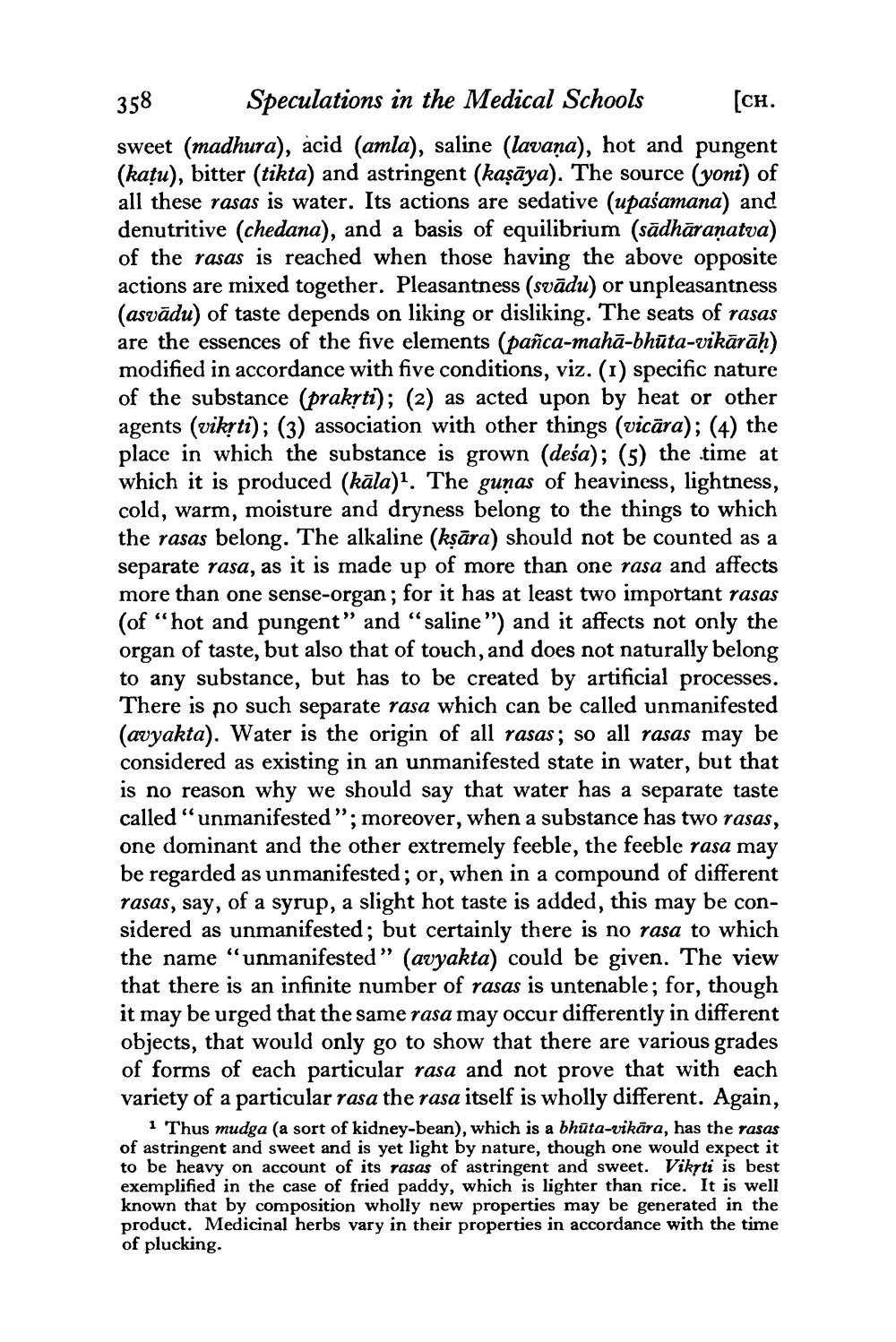________________
358
Speculations in the Medical Schools
[CH.
sweet (madhura), àcid (amla), saline (lavana), hot and pungent (katu), bitter (tikta) and astringent (kaṣāya). The source (yoni) of all these rasas is water. Its actions are sedative (upaśamana) and denutritive (chedana), and a basis of equilibrium (sādhāraṇatva) of the rasas is reached when those having the above opposite actions are mixed together. Pleasantness (svādu) or unpleasantness (asvādu) of taste depends on liking or disliking. The seats of rasas are the essences of the five elements (pañca-mahā-bhūta-vikārāḥ) modified in accordance with five conditions, viz. (1) specific nature of the substance (prakṛti); (2) as acted upon by heat or other agents (vikṛti); (3) association with other things (vicara); (4) the place in which the substance is grown (deśa); (5) the time at which it is produced (kāla)1. The gunas of heaviness, lightness, cold, warm, moisture and dryness belong to the things to which the rasas belong. The alkaline (kṣāra) should not be counted as a separate rasa, as it is made up of more than one rasa and affects more than one sense-organ; for it has at least two important rasas (of "hot and pungent" and "saline") and it affects not only the organ of taste, but also that of touch, and does not naturally belong to any substance, but has to be created by artificial processes. There is no such separate rasa which can be called unmanifested (avyakta). Water is the origin of all rasas; so all rasas may be considered as existing in an unmanifested state in water, but that is no reason why we should say that water has a separate taste called "unmanifested"; moreover, when a substance has two rasas, one dominant and the other extremely feeble, the feeble rasa may be regarded as unmanifested; or, when in a compound of different rasas, say, of a syrup, a slight hot taste is added, this may be considered as unmanifested; but certainly there is no rasa to which the name "unmanifested" (avyakta) could be given. The view that there is an infinite number of rasas is untenable; for, though it may be urged that the same rasa may occur differently in different objects, that would only go to show that there are various grades of forms of each particular rasa and not prove that with each variety of a particular rasa the rasa itself is wholly different. Again,
1 Thus mudga (a sort of kidney-bean), which is a bhūta-vikāra, has the rasas of astringent and sweet and is yet light by nature, though one would expect it to be heavy on account of its rasas of astringent and sweet. Vikyti is best exemplified in the case of fried paddy, which is lighter than rice. It is well known that by composition wholly new properties may be generated in the product. Medicinal herbs vary in their properties in accordance with the time of plucking.




